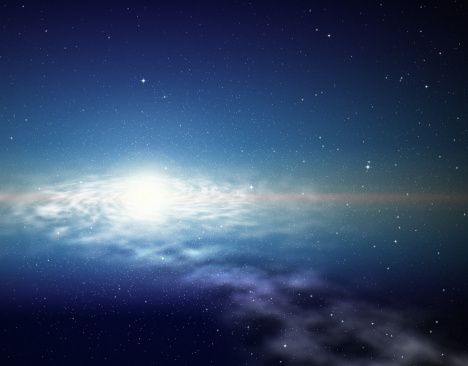
What will happen when the Andromeda galaxy collides with the Milky Way galaxy? originally appeared on Quora: the place to gain and share knowledge, empowering people to learn from others and better understand the world.
Answer by Martin Silvertant, amateur astronomer, researcher, writer, on Quora:
The Milky Way and Andromeda will begin their tidal pull in approximately 3.75 billion years, and the Milky Way–Andromeda collision will inevitably occur in approximately 4 billion years.
The Milky Way has a mass of an estimated 8.5 × 1011 M☉ (solar mass). Andromeda has approximately 1.23 × 1012 M☉. When the two galaxies merge, in another 2 billion years [1], they will become one huge 2.08 × 1012 M☉ elliptical galaxy called Milkdromeda or Milkomeda. As the Milky Way contains around 200 billion stars and Andromeda around 500 billion, the merged galaxy will feature around 700 billion stars before sweeping the Triangulum galaxy up as well.
Below is an excellent description of the predicted/simulated interaction between the two galaxies:
As the two galaxies overlap in about 3 billion years, Andromeda will tip edge-on from our perspective and form an interstellar intersection of two apparent Milky Ways in the night sky. Andromeda will then recede, but the strong tidal interaction will produce a two-armed spiral pattern and extended tidal tails, like those we see in the Antennae (NGC 4038 and NGC 4039 in Corvus). The pull of the Milky Way’s dark halo will reduce Andromeda’s orbital energy, limiting how far it can recede to a few hundred thousand light-years. M31 will then fall in for a second pass within a few hundred million years. This time the collision will be nearly head-on, and the two galaxies will undergo a final spasm of quick, convulsive encounters over 100 million years until they finally merge into a single elliptical galaxy, surrounded by fine shells, ripples, and two extended tidal tails. - The Great Milky
The interacting Antennae galaxies in the constellation Corvus. These merging galaxies offer a nice insight into the galactic dance that will ensue between the Milky Way and Andromeda in approximately 4 billion years.
Although the two merging galaxies well essentially pass through each other and emerge in a dance lasting billions of years before it settles down, it will ignite a great amount of star growth, and a much greater rate of supernovae, from two supernovae per century to up to one per year!
Ultimately the supermassive black holes of both galaxies will merge as well. The supermassive black hole of the Milky Way, Sagittarius A*, has a mass of approximately 4.31 × 106 M☉. Andromeda’s supermassive black hole designated P2 has a mass that was measured to be 3–5 × 107 M☉ in 2005 [2]. Let’s assume 4 × 107 M☉. During the merger some of the mass is radiated away as gravitational waves. Although the exact mass of the merged black hole will depend on the initial orbits, individual spins and orientations of spins in relation to the orbits, the end mass could be said to be about 4.21 × 1077 M☉—losing approximately 2.22 million M☉ in the process.
Footnotes
This question originally appeared on Quora. the place to gain and share knowledge, empowering people to learn from others and better understand the world. You can follow Quora on Twitter, Facebook, and Google+. More questions:
